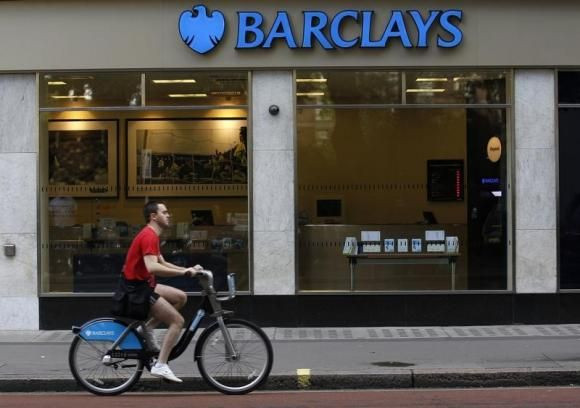Barclays' Dark Pool Trading Volume Falls After Lawsuit

(Reuters) - Trading activity has slumped in Barclays Plc's BARC.L U.S. share trading venue after New York's attorney general accused the British bank of misleading its customers and giving an unfair edge to high-speed traders.
Volume in Barclays' so-called "dark pool" electronic trading venue has slumped by 79 percent in the week and a half after New York Attorney General Eric Schneiderman filed a lawsuit against the bank, data showed on Monday.
The number of shares traded in Barclays LX, an alternative trading system, dropped 66 percent in the week of June 30, according to the data released by FINRA, Wall Street's self-funded regulator. That followed a 37 percent decline in the week the probe was announced.
Many clients had stopped trading equities with Barclays in the wake of the damaging allegations, or had changed how they trade - such as not allowing orders to be directed to its dark pool, or increasing the minimum order size to avoid high-speed traders who typically trade in small chunks, industry sources said.
The sources said that had occurred in Asia and Europe as well as the United States.
For the week of June 30, Barclays' dark pool was the 12th largest in the United States, down from the second largest two weeks earlier.
Schneiderman's June 25 lawsuit said Barclays lied to clients and gave high-frequency traders, using advanced computer systems and algorithms to trade securities in milliseconds, an unfair advantage.
Dark pools allow big blocks of shares to be traded anonymously without informing the market until completion to minimize the risk of the price moving to the disadvantage of an investor should the market get wind of the trade before it is executed.
Barclays promised investors they would be protected from "predatory" and "toxic" traders, but Schneiderman said he had evidence the bank falsified marketing material and misled big institutional clients in an effort to grow its dark pool to increase revenues and bonuses.
The retreat by clients will be a worry for Barclays as it contrasts with when it was the first bank to be fined for alleged rigging of Libor benchmark interest rates, when relatively few clients stopped trading, sources said.
Barclays has said it is conducting an internal investigation into the allegations and has hired external lawyers to help. It said it was still working on its response.
It was due to respond by July 25, but that deadline could be extended.
EARLY CONCERNS
Trading firms and Barclays employees raised concerns about high-speed trading activity at the bank months before the lawsuit was filed, the Wall Street Journal said on Monday.
Some big trading firms noticed their orders were not getting the best treatment on the dark pool and a number of staff also privately expressed concerns to executives that the bank was giving high-frequency traders too much access to its dark pool without informing clients, the newspaper said. (on.wsj.com/1tocIWT)
The report said Barclays is expected to respond strongly to the allegations and argue that some emails and other documents cited in the complaint were taken out of context.
Spokesmen for the bank in New York and London declined to comment.
How far to go in fighting the allegations poses a dilemma for Barclays Chief Executive Antony Jenkins, who has pledged to reform culture and standards and stamp out any wrongdoing.
But the U.S. trading desk at the center of the allegations is part of Barclays’ equities business, an area it had planned to keep largely intact while shrinking its investment bank, and the bank will not want to be singled out first when authorities are examining potential wrongdoing in dark pools across the industry, industry sources said.
The allegations come at a time when Jenkins is under pressure from investors to improve profitability by cutting costs and shrinking its investment bank. The bank is due to report second quarter results on July 30.
© Copyright IBTimes 2025. All rights reserved.





















